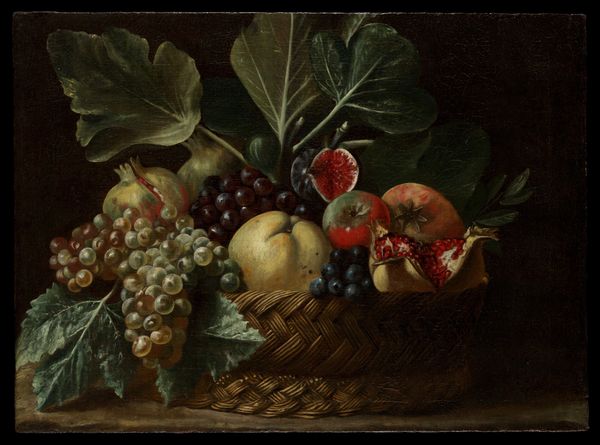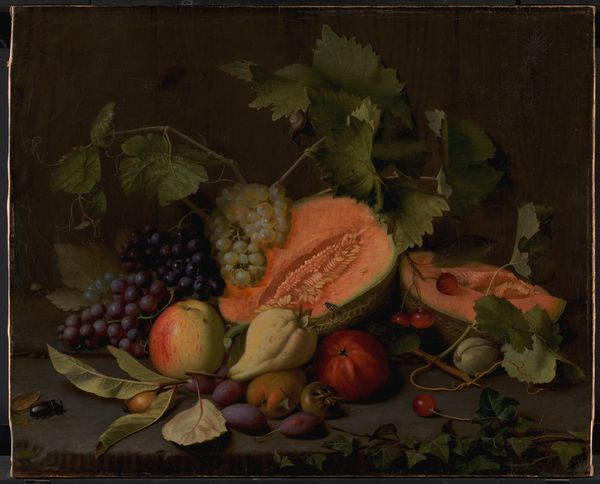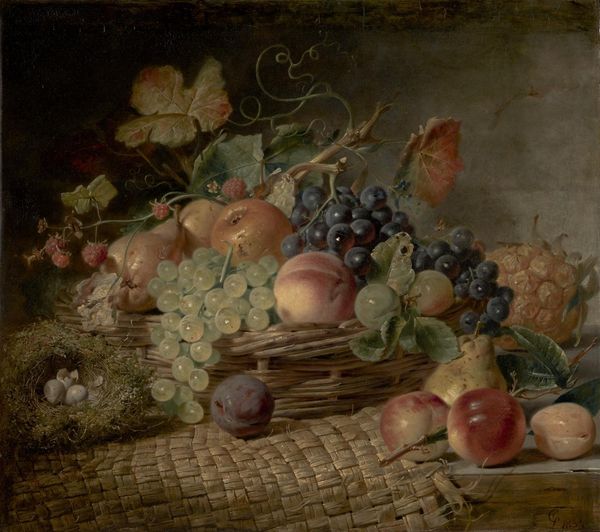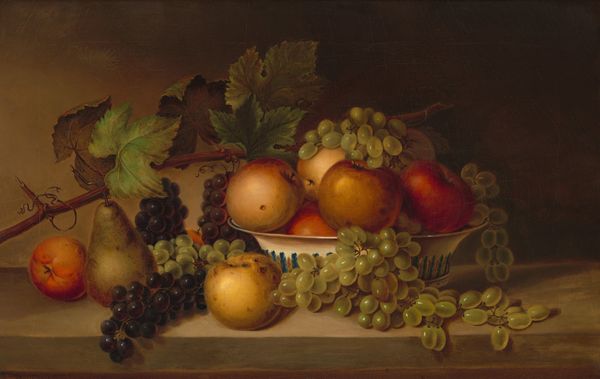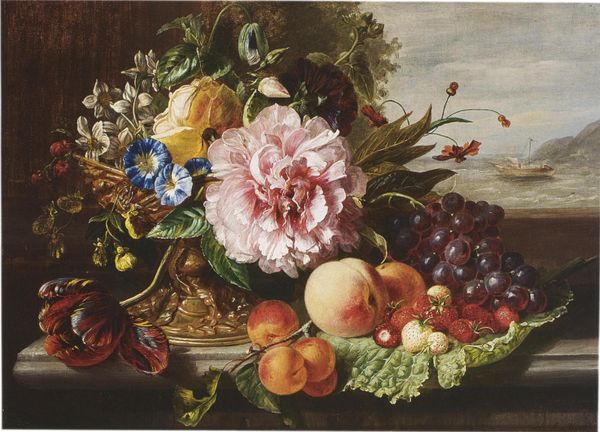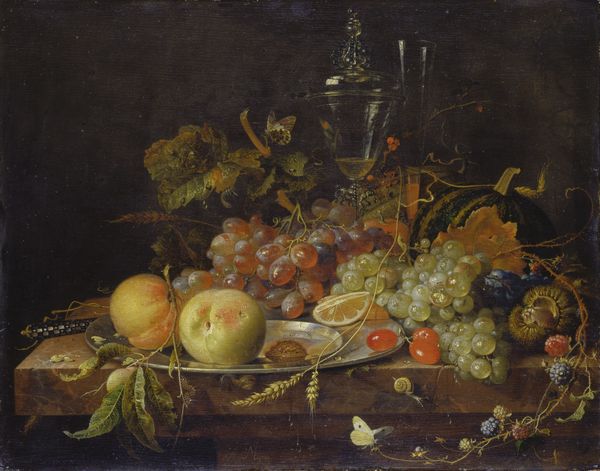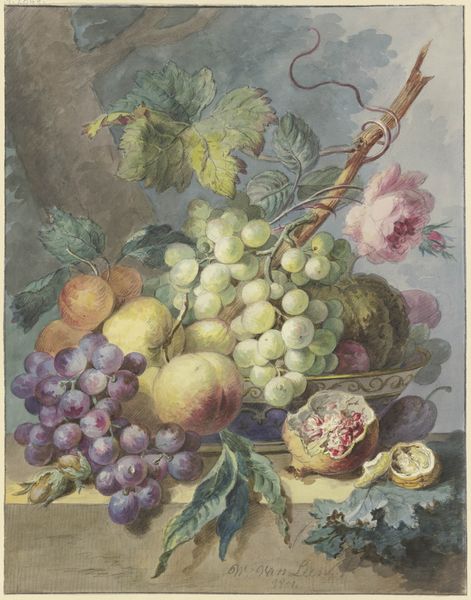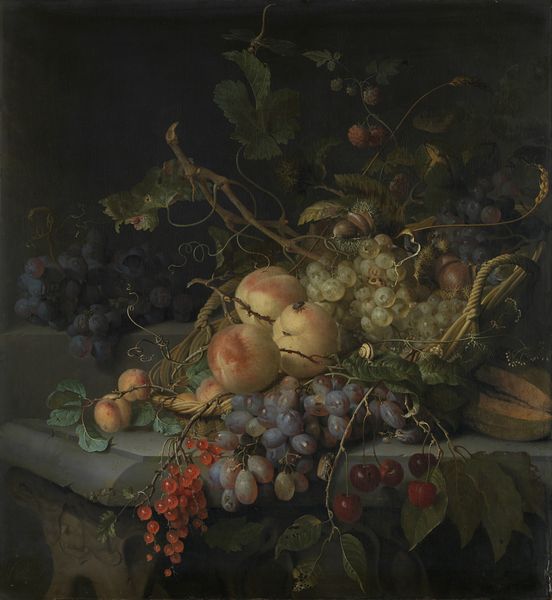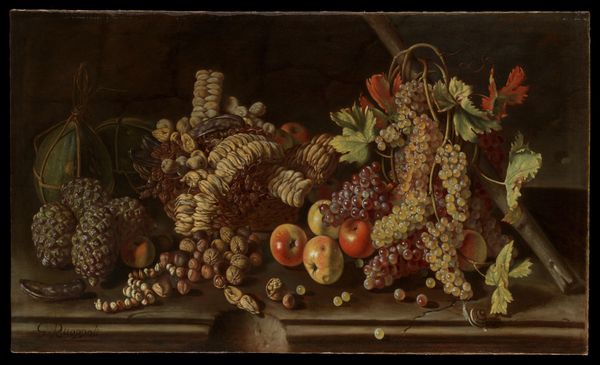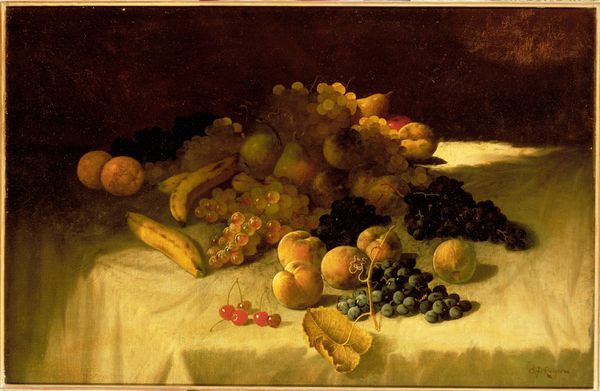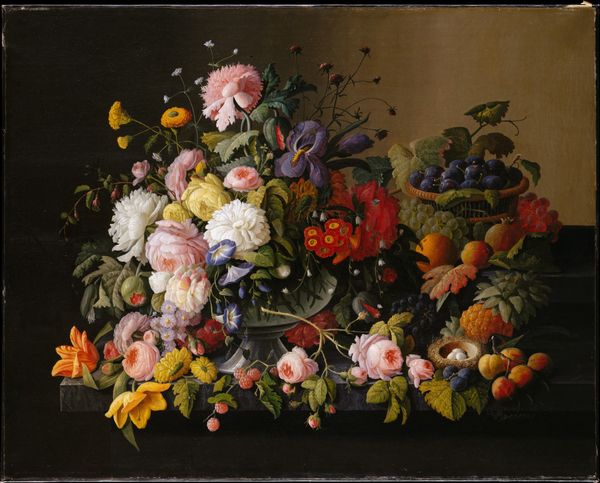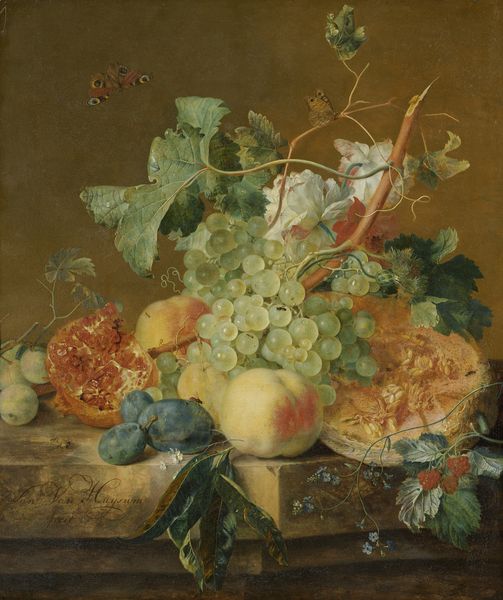
painting, oil-paint
#
painting
#
oil-paint
#
landscape
#
oil painting
#
fruit
#
academic-art
#
fruit
#
realism
Dimensions: 13 1/2 x 15 in. (34.29 x 38.1 cm) (canvas)12 3/4 x 14 1/4 in. (32.39 x 36.2 cm) (sight)19 x 20 3/4 x 3 in. (48.26 x 52.71 x 7.62 cm) (outer frame)
Copyright: Public Domain
Curator: Looking at John Wainewright's "Still Life with Fruit," completed in 1862, what strikes you most initially? Editor: The weight of it all! There’s an almost overwhelming abundance depicted; that dense arrangement of dark grapes, contrasted by the pale peaches, feels deliberately luscious. The artist presents the objects very realistically. Curator: The choice of elements within the frame and the overall visual presentation do provide a clear impression of wealth, or at least of luxury. Considering the time in which Wainewright created this work, that feeling ties back to cultural narratives around trade, accessibility to food, and class hierarchies within nineteenth-century society. These objects may seem banal, but the presentation is loaded. Editor: That's an astute point. Looking at it through a symbolic lens, I can't help but wonder what fruits might represent beyond mere sustenance. Are these allusions to things such as classical abundance, maybe ideas about paradise? Each fruit carries a tradition of art. Curator: Exactly! The historical lineage of still-life painting is unavoidable here. However, who had access to enjoy these pleasures? We might also consider the exploitative histories behind these imported items or those who made the attainment of these luxurious fruits and decorative arts available to the ruling class. How might we critically reconsider these types of work that can romanticize reality, in essence? Editor: That pushes back against this kind of classical trope by considering contemporary social implications of such art. We might recontextualize the visual appeal with a broader critique. The individual artist perhaps becomes less of the focal point than the art history they inherited and the socio-economic environment which supported their labor. Curator: The artist and art become documents of society, ultimately revealing to a viewer who mattered then and how power and social justice are maintained and sustained through visual media. Editor: Fascinating, truly. And the artwork can shift from pure appreciation to a locus point of discussions. Curator: Indeed, reframing older works to reveal historical contexts creates necessary discourse about art, ethics, and societal advancement. It can then move viewers to question all the visual information around us in media today.
Comments
No comments
Be the first to comment and join the conversation on the ultimate creative platform.
